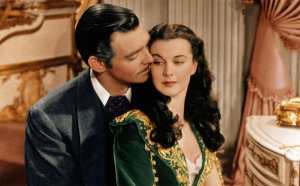Looking at all the stories of alcohol and/or drugs addiction that affect the showbiz, it’s hard to believe that Hollywood was founded with the purpose to create a prohibitionist town. At the end of the XIX century, the entrepreneur Harvey Henderson Wicox, during the honeymoon, is convinced by his wife Daeida Hartell to buy an area of 50 hectares to establish an oasis free from alcohol and other weird restrictions: firearms (and that’s fine), bowling lanes and bicycles on the sidewalks. Hartell’s utopia doesn’t last, though.
In 1903 the inhabitants have to decide if they want to make Hollywood an official city. Daeida opposes, but being a woman has no right to vote. Her dreams ends in 1910, when the population prefers to be annexed to Los Angeles, bigger and most of all with a better water supply. More changes will subvert the quiet (former) village soon.

The movie industry, until then, is based on the East Coast, but the production companies choose to move on the other side of the United States to have more benefits: better weather, variegated landscapes, cheaper prices, escaping from the menacing Thomas Edison.
The famous inventor has the monopoly on a series of machinery needed to shoot movies and doesn’t hesitate to sue whoever used them without permission. It seems that Edison even hired criminals to physically threaten the transgressors, damaging the independent authors, who had less economic cover. In 1917 the Supreme Court put an end to Edison’s reign of terror, declared illegitimate because against the public interest – it’s ironic how now the industry does the same with streaming reproductions & co.

At the end of the 1910’s begins the golden era of Hollywood, which thrives in the next decade for the coming of talking movies and lasts almost fifty years. Five companies control distribution, own theaters and basically actors, writers and directors, tied with life-long contracts. It’s the studio system of Paramount, 20th Century Fox, Rko, Metro Goldwin Mayer and Warner Bros. However, classics like Gone with the wind, Casablanca, Snow White and Citizen Kane – great success for a non mainstream movie – are released.
Once again, the Supreme Court comes into play, this time against Paramount, sentenced for violating free competition. But the toughest strike arrives from a new tool, television, which allows to watch movies staying comfortably at home and save money. In the 1930’s 60% of the population went to the theater at least once a week. In the Sixties only 10% keeps doing it. This numbers will never rise again.
Hollywood counterattacks. Bigger screens, better effects, impressive scenery. However, huge films like Cleopatra, despite the success, aren’t able to recoup the money invested. Over time, producers leave more freedom to screenwriters and directors. Movies like Jaws by Steven Spielberg, The Godfather by Francis Ford Coppola or Star Wars by George Lucas mark a period of innovation and variety of genres. But still the expenses are too high and bankrupt is always behind the corner.

Now that even television is considered obsolete, the new menaces for the industry are on one side services like Netflix or Hulu, on the other side independent productions: with a phone and a few basic editing programs, film-makers can work at a very cheap price.
Hollywood is back to sensationalism, promoting everlasting fantasy or superheroes movies which make good at the box office although saturation. The industry is able to keep its recognizable brand name. So far away from the small and quiet prohibitionist village.


































